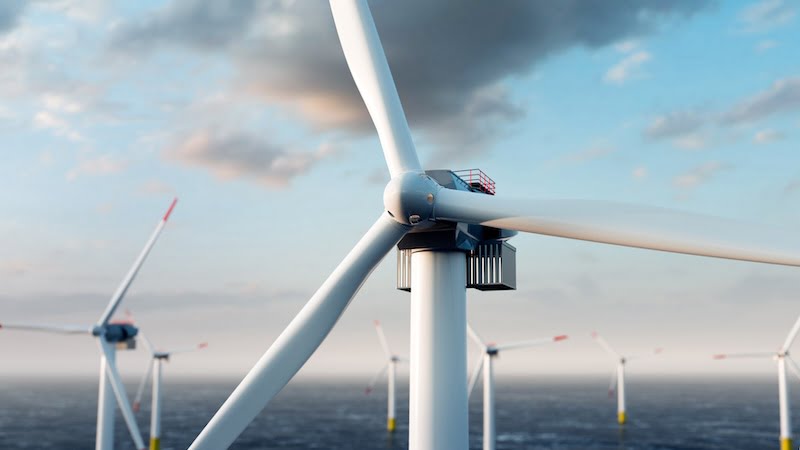
Wind energy plays a key role in reducing CO2 emissions. It offers an environmentally friendly alternative to fossil fuels. Wind turbines convert wind into electrical energy. But how does a wind turbine actually work?
By 2030, a total of 71 gigawatts of electricity are to be generated by onshore wind turbines in Germany. This is what the Renewable Energy Sources Act provides for. In 2023, 772 new wind turbines with a capacity of 3,824 megawatts were installed and put into operation in this country.
All this is part of the Federal Republic's efforts to produce at least 55 percent less greenhouse gas by 2030 than in 1990. Germany is then to be CO2-neutral by 2050.
How does a wind turbine actually work?
A wind turbine uses the power of the wind to generate clean, sustainable energy. To do this, it needs a rotor. This consists of rotor blades reinforced with glass or carbon fibers. They form the heart of the construction.
The rotor blades are aerodynamically shaped, similar to the wings of an airplane. When the wind and the rotor blades meet, the wind flow creates lift that causes the rotor to rotate. This kinetic energy of the wind is thus converted into mechanical rotational energy.
The rotating rotor blades are connected to a generator in the nacelle, which is the machine house on top of the tower. The generator converts the mechanical rotation energy into electrical energy. This process is comparable to a bicycle dynamo, which also generates electricity through the movement of the bicycle.
By the way: When the rotor blades of a wind turbine rotate, they make noise. However, experts are constantly trying to improve and minimize these noise emissions. In addition, the wind turbines must comply with certain specifications in order not to disturb nearby residential areas.
The higher, the better: How wind turbines work efficiently
As soon as the wind blows at a speed of at least three to 4.5 meters per second, wind turbines start working. Because the nacelle can rotate, the rotors can always be positioned optimally in the wind. In addition, the rotor blades can be adjusted around their longitudinal axis. This means they can keep the speed constant even when the wind speed changes. And: a wind turbine works efficiently at a rotation speed of just three revolutions per minute.
In order to generate a lot of electricity, a wind turbine needs high average wind speeds and large rotor surfaces. The higher the wind turbine is built and the longer the rotor blades, the better the turbine can use the wind on site. The wind is also less strong inland, so the turbines usually have to be higher than in coastal regions. This is another reason why the choice of location is important.
How does a wind turbine work? Onshore versus offshore
When it comes to wind turbines, a distinction is made between so-called onshore and offshore wind turbines. Onshore wind turbines are installed on land and use the wind energy on the mainland, while offshore wind turbines are located in the sea. They use the stronger and more consistent wind conditions on the open water.
The construction of an onshore wind turbine is only worthwhile where the so-called wind power density is high enough. It is a measure of how much power the wind makes available for use on average when it flows through the rotor at a location.
In a windy location, for example on a hill or on the coast, a modern wind turbine can generate an average of 15 million kilowatt hours of electricity per year. This could supply up to 4,000 households with green electricity for an entire year.
Also interesting:
Source: https://www.basicthinking.de/blog/2024/07/15/wie-funktioniert-ein-windrad/


